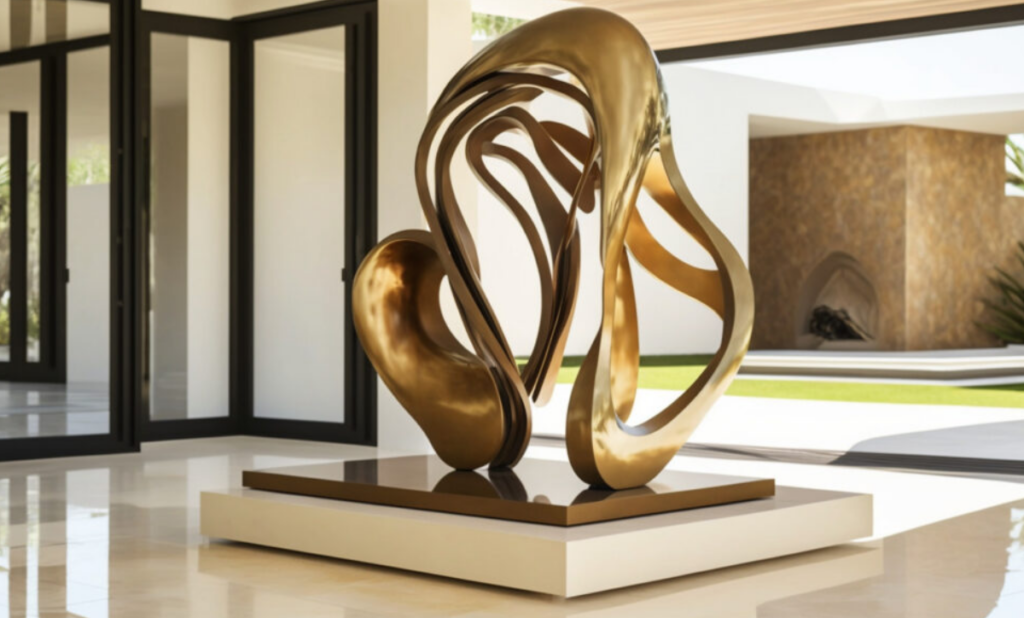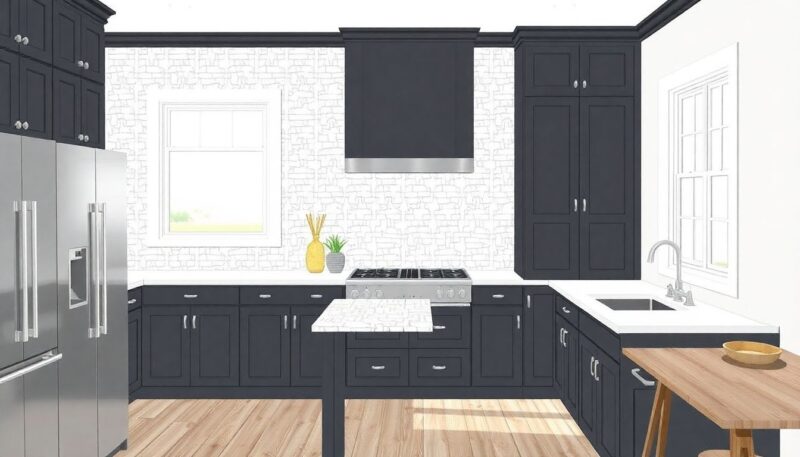
If you’re an interior design enthusiast, you must always be on the hunt for one-of-a-kind pieces to elevate your home decor. Indoor sculptures, whether abstract or realistic, are an amazing choice when you want to add an artistic touch to your interior. Whether displayed on a bookcase, coffee table, or mantel, a decorative statue will change the atmosphere of your room while infusing it with personal style.
You’re sure to find the perfect fit for your home decor among the many sculpture designs and materials available. If your space has a modern, minimalist atmosphere, sleek, abstract metal sculptures will work well. Marble sculptures also give a place a very appealing and tidy appearance; they create a pleasing balance and go well with the sleek lines of contemporary décor. If your interior design is rustic or eclectic, go for sculptures made of natural materials such as stone. These earthy elements provide warmth and texture to any space, creating an inviting and natural atmosphere.
No matter your style, there are a plethora of possibilities waiting to adorn your home. Let’s have a look at the various styles and themes of indoor sculptures you have to choose from.
Styles And Themes
Classical And Traditional
One way to honor the human form in all its grandeur is to use sculptures inspired by Greek and Roman mythology. These have dynamic poses and finely drawn figures that capture the essence of the Renaissance era with grace, sophistication, and a deep understanding of the human spirit. Alternatively, you can use Renaissance-style figures.

Contemporary and Modern
Choose abstract and minimalist sculptures if you like modern art. These pieces emphasize shape, line, and negative space, allowing viewers to interpret and engage with the work on a personal level. You can also go for experimental and avant-garde designs that provoke thought and challenge discussions with surrealist-inspired pieces and boundary-pushing structures.
Cultural and Ethnic
Asian-inspired statues can bring the wisdom and calm of the East into your home. Think of a serene Buddha statue or a beautifully carved Chinese guardian lion. Alternatively, celebrate the rich diversity of global cultures with Indian, African, and Indigenous art that features vibrant colors, intricate patterns, and potent symbolism.
Now that you are familiar with the designs of statues let us look at the materials and finishes that give these artistic masterpieces life. Each material has a unique colour, texture, and characteristic that you can use to further customise your decor to fit your tastes in terms of both style and aesthetics.
Materials And Finishes

Elegant Stone
Marble, with its timeless beauty and seamless, cold surface, has long been a favorite of sculptors. Its clean white surface exudes classical sophistication, making it an excellent choice for sculptures conveying grace and refinement. Alabaster, with its softer and more translucent characteristic, offer a subtle radiance that may produce an enthralling play of light and shadow.
Shiny Metals
For a touch of majesty and longevity, think about using statues made of metals like iron, brass and bronze, which have a rich history in sculpture and can be shaped into intricate forms. The warm, glossy texture of metal sculptures adds a rich element to your design and makes them a visually arresting focal point.
Natural Wood
For natural warmth and organic beauty, choose wooden statues. Wood carvings, whether in the rich grains of walnut or the delicate grace of maple, provide a tactile and visually appealing contrast to other materials. These sculptures frequently reflect rustic charm and artisanal craftsmanship.
Versatile Resin
Resin statues are an affordable and versatile alternative to statues made from natural materials. They can be molded to produce fine details and to have the appearance and feel of stone or metal. Furthermore, composite materials provide a variety of possibilities, ranging from lightweight, easy-to-move parts to those designed to withstand outside elements.
Polished, Painted or Patine Finishes
You’ll be able to choose indoor statues that not only reflect your style but also match the existing pieces in your home if you get familiar with the materials and finishes available.
A painted finish can add brilliant colours and elaborate details, whilst a polished surface leads to a shiny, reflected appearance. A patina coating, which is commonly seen on bronze statues, gives the object an aged worn appearance, depth and character.
How to Incorporate Sculptures Into Your Room Decor

Careful placement is required for sculptures to be shown correctly. A beautiful metal sculpture would look wonderful on a prominent shelf or pedestal in your living room. This will draw attention to the piece while also creating an eye-catching visual contrast with the surroundings. For a more stunning appearance, place large-scale sculptures at the entrance.
Don’t be afraid to mix and match different sculpture types in your interior decor. Sculptures in varying shapes, sizes, and materials can be mixed to create a dynamic and intriguing composition. The interaction of different sculptures sparks conversation among your guests while also adding visual curiosity. Try contrasting aesthetics, such as pairing a delicate porcelain piece with a robust, geometric metal piece. Mixing and matching will allow you to create a personalized, intricate appearance for your room that reflects your artistic side and personal taste.
Make sure to consider the size and proportions of your room while selecting sculptures. A large, striking sculpture in a small location may overshadow its surroundings, whereas a small sculpture in a large space may go under the radar. Aim for balance so that the sculpture may stand out without dominating the space. Consider the height, width, and depth of the sculpture and how it fits its surroundings to ensure that it enhances and complements the overall aesthetic.
Less is more when it comes to pretty much any kind of decoration, so unless you live in a larger-than-average home where statues can be placed tastefully all over the place without taking up too much living space, avoid overcrowding your living area with too many statues. A sculpture is best used as a focal point to draw attention and make a statement; when they are too close to one another, the eye gets confused and becomes confused about where to focus.



